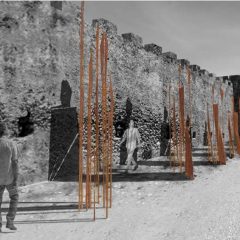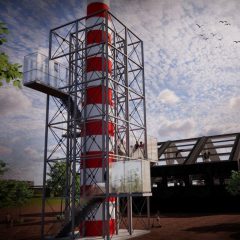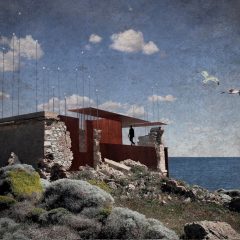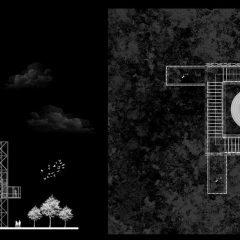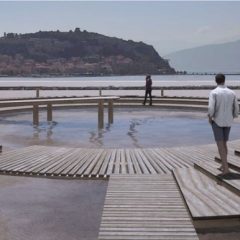Dr. Moira Maria, Dr. Makris C. Dimitrios, Dr. Michalopoulou Katerina
General
Language, with its ability to express thought more broadly and to invent the new (what has not yet crystallized into spatial or material event), crosses different cognitive areas and formulates thoughts. It bridges the contradictions and undermines our established certainties and prejudices about what we consider to be known, about the world, space, human society and existence.
The course examines the relationship between space, form, language and representation in architectural design, the two-way flow of visual, conceptual and empirical experiences between different fields, between language and space, words and objects.
Course content
The content of the course concerns the research of specific theoretical issues regarding the conception-production-design of the interior space and the interpretation-renegotiation of the civil contract and the design of the space in general. The course focuses on the process of conveying meaning between symbolic forms. Selecting the text as the experimental starting point, the possibility of transition from language to different understandings and transformations of the spatial event is examined. The central focus of this approach is the search for relationships and analogies between the linguistic symbolic representations and the architectural objects we design.
Programme aims
The aim is to better understand the ability to generate meaning in the design process by drawing ideas from literature and essays. Literature is chosen as an unconventional starting point for reflection on the essence of the architectural work. This process allows the students to creatively use the conceptual load of words and critically and consciously examine aspects of the design of architectural objects that are often considered to be given, thus promoting analytical thinking and experimentation.
Learning Outcomes: Knowledge and Understanding
The function, the purpose and even the synthetic intentions are aspects of architecture that are often examined in texts and it is in the learning intentions of the course that students are able to detect these ideas, to “translate” them and to manipulate them creatively into the form of diagrams. The use of diagrams as analytical tools, that act interactively as an intermediate condition at the time of their creation, allows for a brief and documented communication and expression of the thoughts drawn from the texts.
Bibliography
– Bal, M. (2009). Narratology. Introduction to the Theory of Narrative. University of Toronto press.
– Casey E. (1997). The fate of place: A philosophical history. Berkeley CA: University of California.
– Cresswell T. (2004). Place: A short introduction. Oxford, Blackwell.
– Friedman, S. S. (1996). Spatialization, Narrative Theory, and Virginia Woolf’s The Voyage Out. In Mezei K. (Ed.), Ambiguous Discourse – Feminist Narratology & British Women Writers. University of North Carolina Press.
– Rodaway P. (1994). Sensuous Geographies: Body, Sense, and Place, London: Routledge.
– Tuan, Y.-F. (1991). Language and the making of place: A narrative-descriptive approach. Annals of the Association of American Geographers, 81(4): pp. 684-696.
– Tally, R. T., Jr., (ed), (2017). The Routledge handbook of literature and space. Routledge Abingdon, Oxon ; New York, NY.
– Cooper D., Donaldson C., Murrieta-Flores P. (eds.), (2016), Literary Mapping in the Digital Age, New York: Routledge.
– Bodenhamer, J. Corrigan and Harris T. M., (2015), Deep Maps and Spatial Narratives, Indianapolis: Indiana University Press.
– N. Pleßke, (2014). The Intelligible Metropolis, transcript Verlag, Bielefeld.


